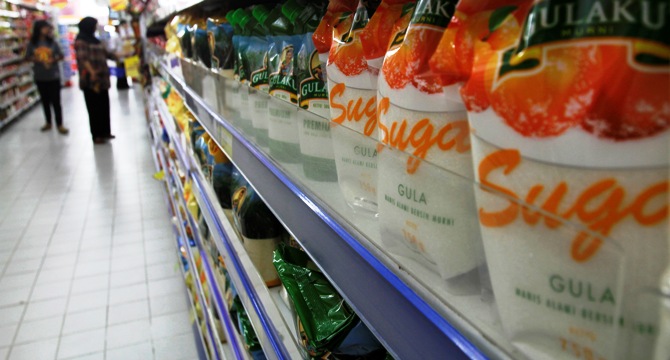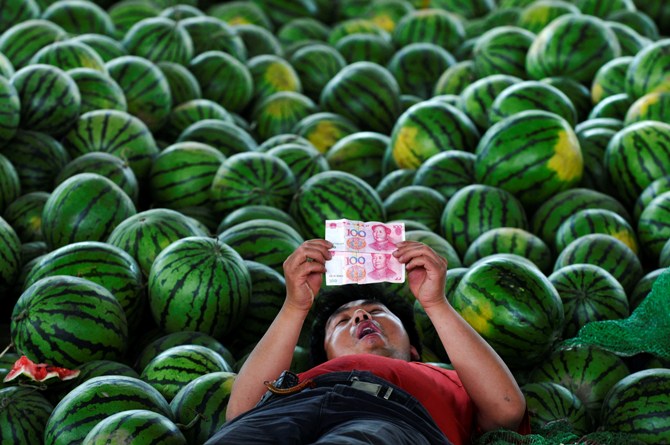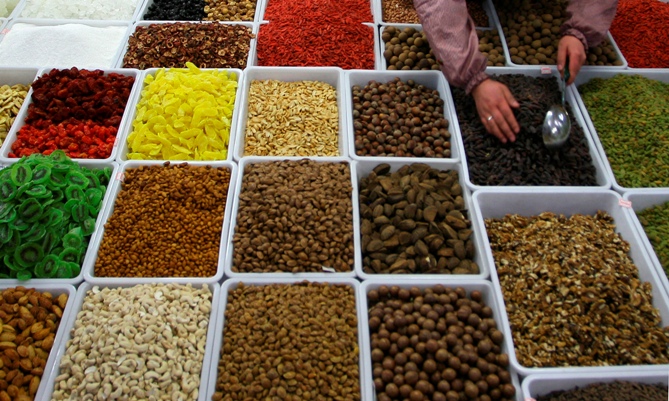Photographs: China Daily/Reuters Kunal Bose
The phenomenon has much to do with the fact that average growth in global farm yields almost halved since 1990, says Kunal Bose
Based on a research report, global humanitarian organization Oxfam has warned average prices of staple foods such as wheat and maize would more than double by 2030, and we seem on course for that.
As it foresees rising prices heaping miseries upon the world's poorest-who spend up to 80 per cent of their incomes on food-Oxfam has sought the intervention of G-20 countries for greater regulation of commodities markets to contain volatility in prices.
Recently, an Oxfam official said the fact that the 2011 famine in east Africa and the 2012 drought in the US, the worst in that country in 50 years, sent corn and soy beans prices to record highs should be a ‘wake up call’ to governments about the impact of climate change on the wretched of the earth.
In a bare demonstration of chinks in governmental commitment to keep the environment clean, the Oxfam report says half the food price rise in the next 17 years would be on account of climate change.
. . .
World stares at doubling of food prices by 2030
Image: Workers walk inside an aisle of the newly opened Bharti Wal-Mart Best Price Modern wholesale store in Hyderabad.Photographs: Krishnendu Halder/Reuters
The phenomenon has much to do with the fact that average growth in global farm yields almost halved since 1990.
Worryingly, this is to decline further to a fraction of one per cent in the next decade. India's farm sector, recording annual average growth of 3.6 per cent, against the target of four per cent in the 11th Plan (2007-12), no doubt performed better than the world average.
But this should not detract attention from further reforms that alone could help achieve the 12th Plan growth target of four per cent.
THE CRISIS IN NUMBERS |
|
. . .
World stares at doubling of food prices by 2030
Image: Bags of white sugar are displayed in a supermarket in Jakarta.Photographs: Supri/Reuters
Not only does the Oxfam report continue to agitate the minds of world leaders, it has also provoked a look at the weakening global food security, which is to remain the ‘fundamental issue of the next half century’, by many other agencies.
In many countries, food, because of unchecked inflation inflicting pain on people, perforce is claiming increasingly greater attention of political leaderships.
If the humble onion is a point of major concern for the United Progressive Alliance government in India, it is because of the awareness that non-affordability of a staple of the Indian diet could once again be a political game changer.
In India, parliamentary elections are less than a year away.
Underlining the upheavals that hunger resulting from food shortages and high prices might cause, the leader of the UK-based Global Food Security working group, Tim Benton, says in the coming decades, finding access to water and land (rather than oil and other natural resources) would be the reason for wars.
. . .
World stares at doubling of food prices by 2030
Image: A watermelon vendor looks at yuan banknotes at a market in Changzhi, Shanxi province.Photographs: Reuters
He does not rule out food prices trebling in 20 years, something scarier than the Oxfam forecast, as the number of mouths to be fed keeps growing in the face of slowing land productivity.
More, volatile weather conditions and a rise in temperatures have made food production around the world, India included, vulnerable to major swings.
The global population is tipped to rise from seven billion to 9.3 billion by 2050.
A population of that order would raise global demand for food up to 70 per cent, according to the GFS working group.
Many agencies have said about a billion people, not all of them from least developed countries, go hungry to bed every night.
World stares at doubling of food prices by 2030
Image: Workers remove stalks from red chilli at a farm in Shertha village on the outskirts of Ahmedabad.Photographs: Amit Dave/Reuters
Oxfam foresees a combination of ‘devastating factors’ such as climate change, depleting natural resources, use of food crops to make biofuels and population growth leading to an unprecedented reversal in human development and a rise in ‘deep poverty’.
With food prices and, consequently, global hunger, rising, the crisis is already here.
As in India, food has come to occupy a preeminent position in the political agenda of most countries.
This is the only silver lining in an otherwise grim situation.
Agricultural systems need a major overhaul so that crops can be grown with much less water, despite allowing for breakthroughs in land productivity.
Finance Minister P Chidambaram has spoken of the need for ‘original green revolution states’ in India finding an answer to stagnating yields and overexploitation of water resources in ‘crop diversification’.
. . .
World stares at doubling of food prices by 2030
Image: A vendor sells dry fruits and nuts at a market in Lanzhou, northwest China's Gansu province.Photographs: Reuters
Large investment in integrated watershed management is essential to farming in drought-prone and ecologically stressed regions successful.
The liberal allocation under this head in the 2013-14 Budget speaks of our intent to stay in the forefront of the global campaign to gainfully use arid and semi-arid areas for growing suitable food crops.
Watershed management is one way to stop desertification and grow crops in areas earlier thought to be unviable for farming.
The global challenge is to unite science with much greater funding for research than is the case now, farming in different climatic zones and marketing of farm produces.
Sadly, when hunger is so widespread, about a third to half the global food production of four billion tonnes goes to waste.
This is because of poor harvesting, storage and transportation bottlenecks, as in India, the immense quantity of food wasted at the household level in developed economies and too exacting standards of the appearance of fruit and vegetables set by global retail chains.








article